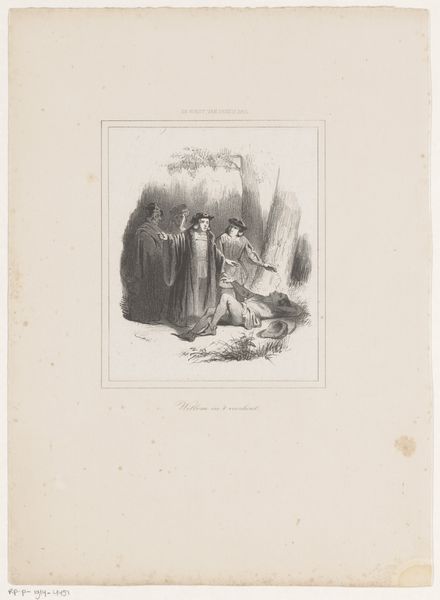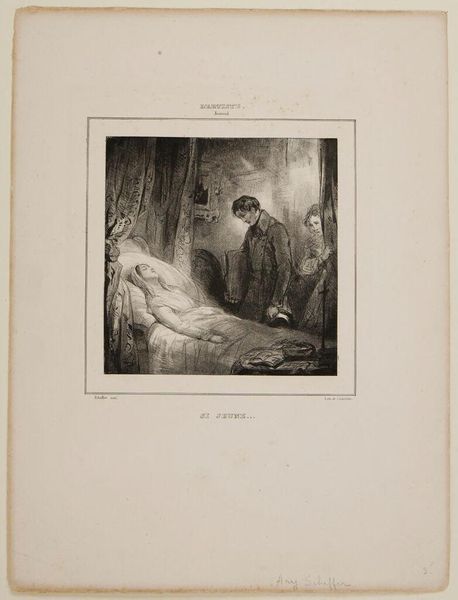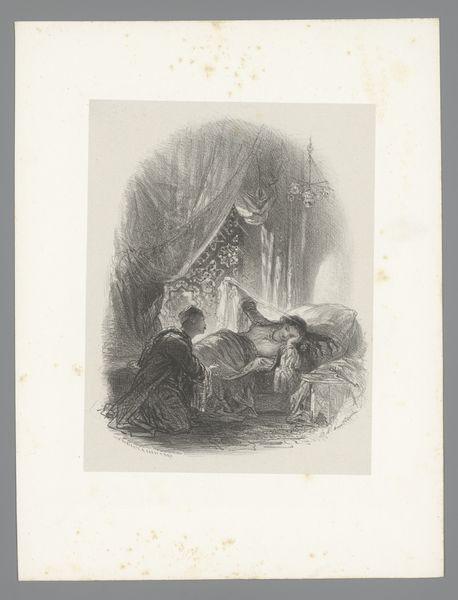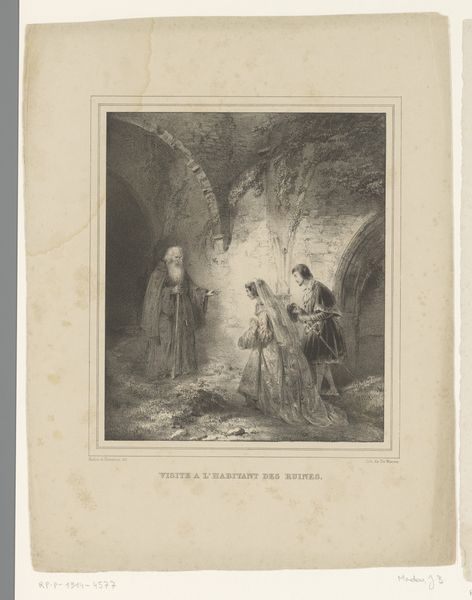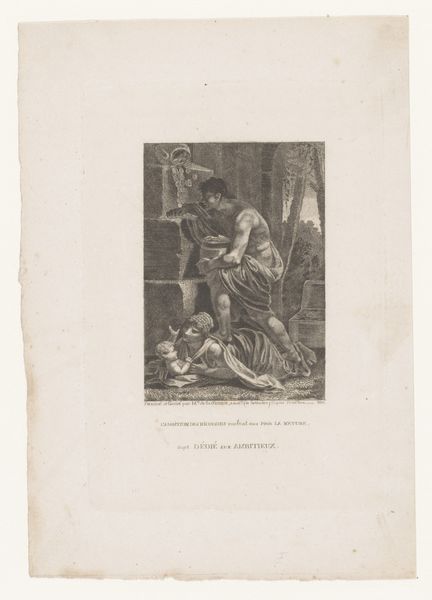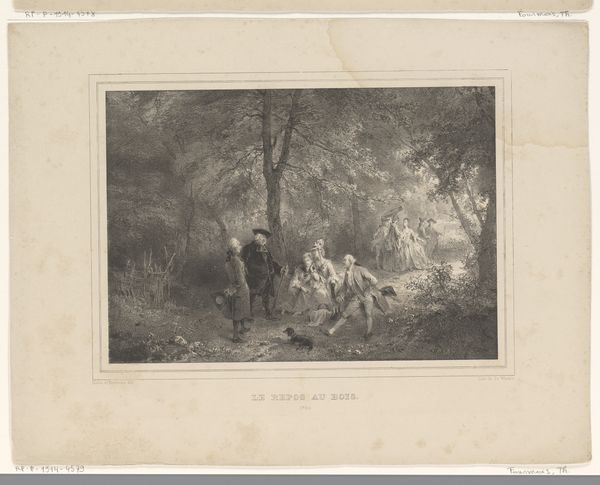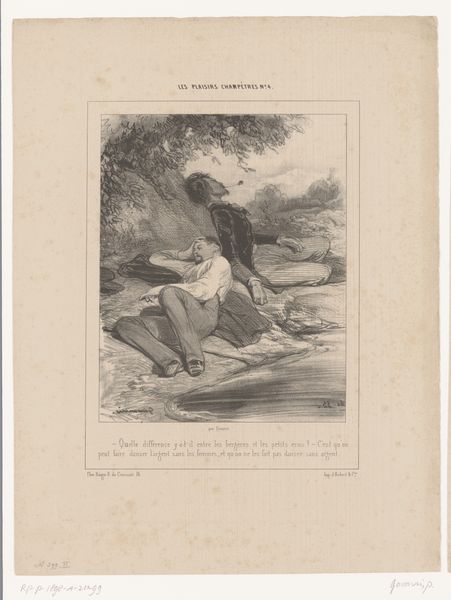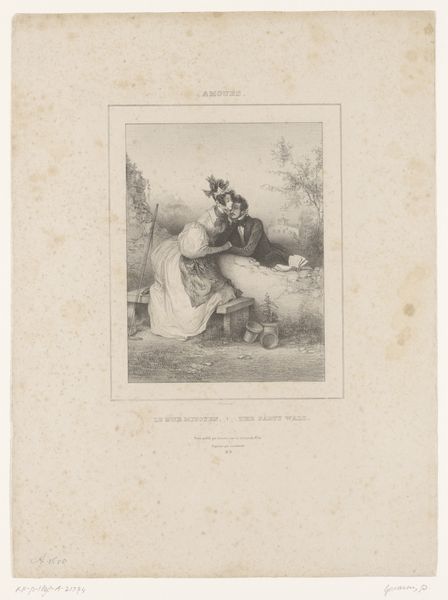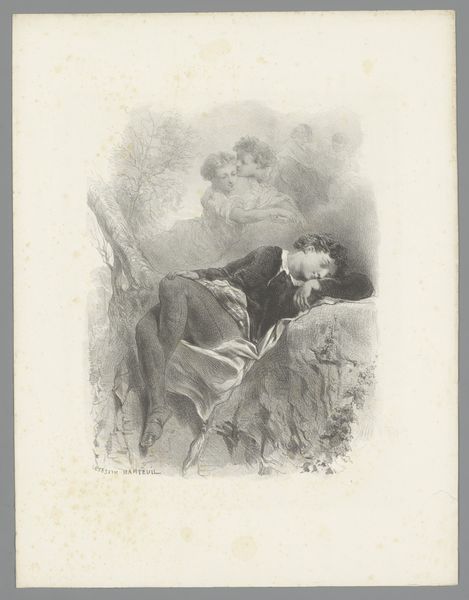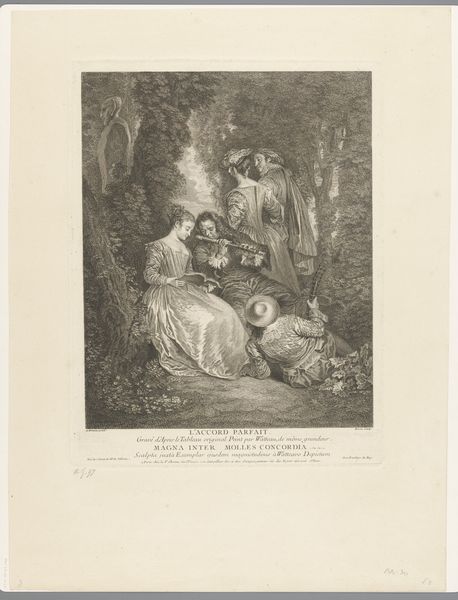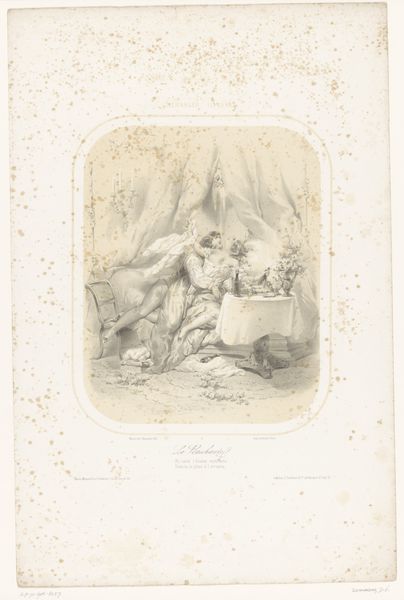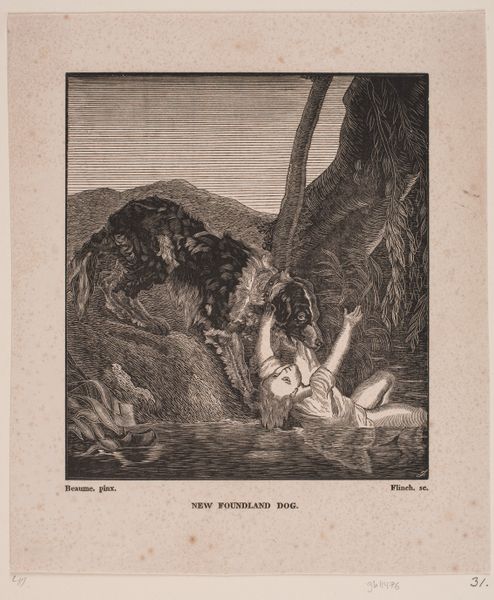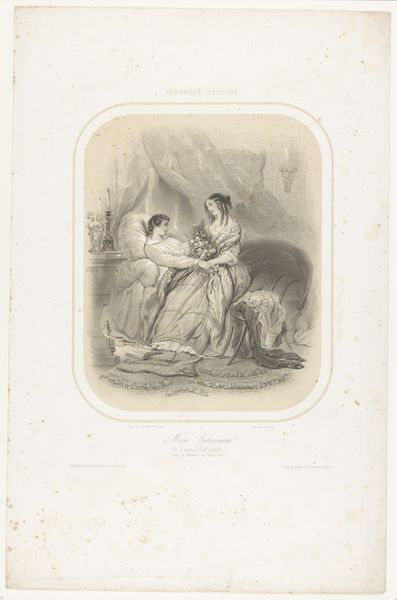
drawing, print, etching
#
portrait
#
pencil drawn
#
drawing
#
narrative-art
# print
#
etching
#
figuration
#
form
#
romanticism
#
line
#
history-painting
#
realism
#
monochrome
Dimensions: height 253 mm, width 208 mm
Copyright: Rijks Museum: Open Domain
Curator: What a stark and moving image. Before us is Ary Scheffer's "Man bij sterfbed jonge vrouw," translated as "Man at the Deathbed of a Young Woman," created before 1831. It is an etching, a print made with such intricate lines. Editor: It certainly arrests the eye. The somber tones create a heavy, almost suffocating atmosphere. The lines are so finely etched that they give the image a delicate, almost ghostly quality. The lighting, what little there is, focuses our attention immediately on the bed. Curator: Absolutely. It captures a very specific social reality, one rife with gendered expectations and societal limitations. The woman lying in the bed, seemingly lifeless, and the somber man leaning on a chair beside the deathbed suggest many social inequalities and gender roles prevalent in the 19th century. Editor: Notice how Scheffer uses contrasting lines to delineate the different figures and textures. The crisp lines that define the man's clothing contrast sharply with the softer lines shading the woman’s face, emphasizing his solidity and her vulnerability. This isn't just a picture of mourning; it's a study in contrasts and forms. Curator: Definitely. And note how the image invites considerations around agency. Is she dying due to illness exacerbated by limited opportunities? Is the man representative of patriarchal control? The image fosters critical dialogues about the experiences of women and marginalized individuals during the time. Editor: I can agree with that. The arrangement of objects too speaks volumes. The composition creates a kind of emotional triangle between the mourner, the witness and the deceased, with careful attention to balance, directing the viewer’s gaze toward this very human drama and eliciting emotions of empathy and sorrow. Curator: Precisely, the composition makes one consider not only individual experience, but also social structures that shaped those experiences. It is not only about this particular man, or this particular woman, but what their individual fates represented within a broader social and political landscape. Editor: Well, regardless of any cultural contexts, the undeniable strength of this piece lies in its ability to utilize visual cues, to explore and define human emotional limits. It's the careful modulation of line and form that invites such complex interpretation. Curator: It leaves a lasting impression, demonstrating art's ability to document, and critique. Editor: A powerful work that utilizes all its visual techniques.
Comments
No comments
Be the first to comment and join the conversation on the ultimate creative platform.
